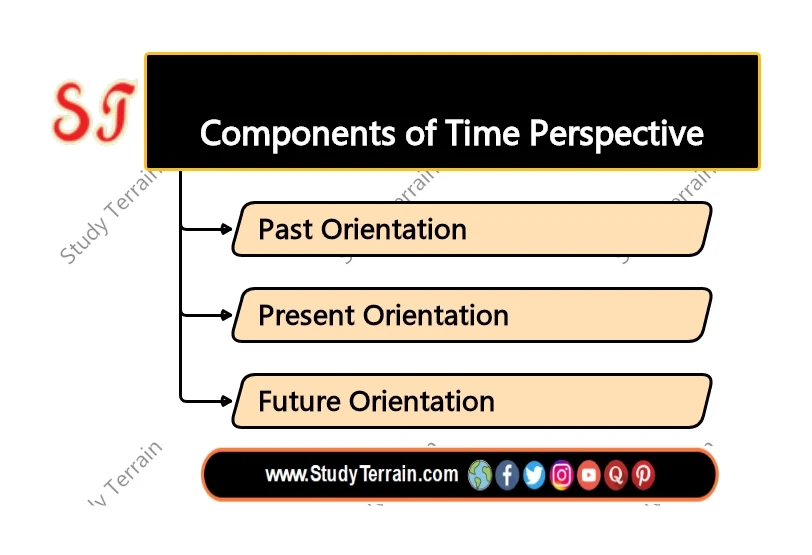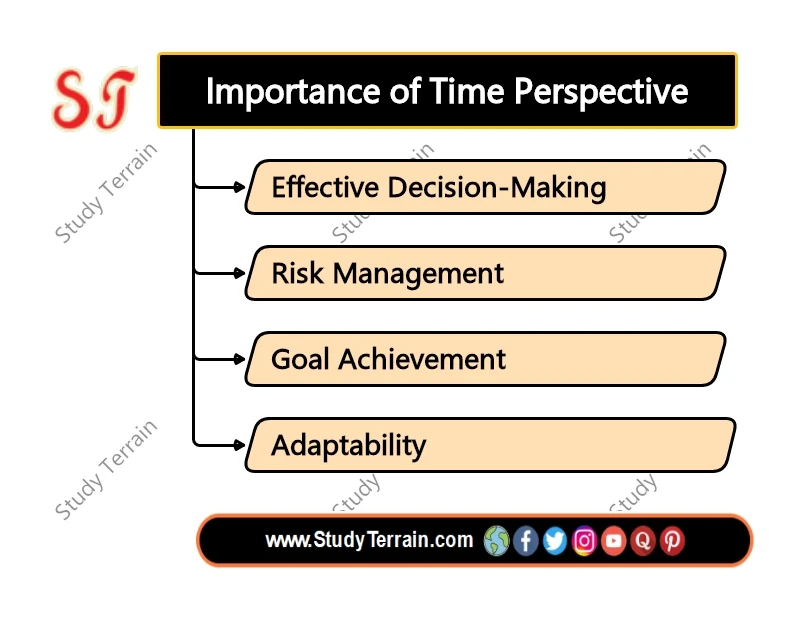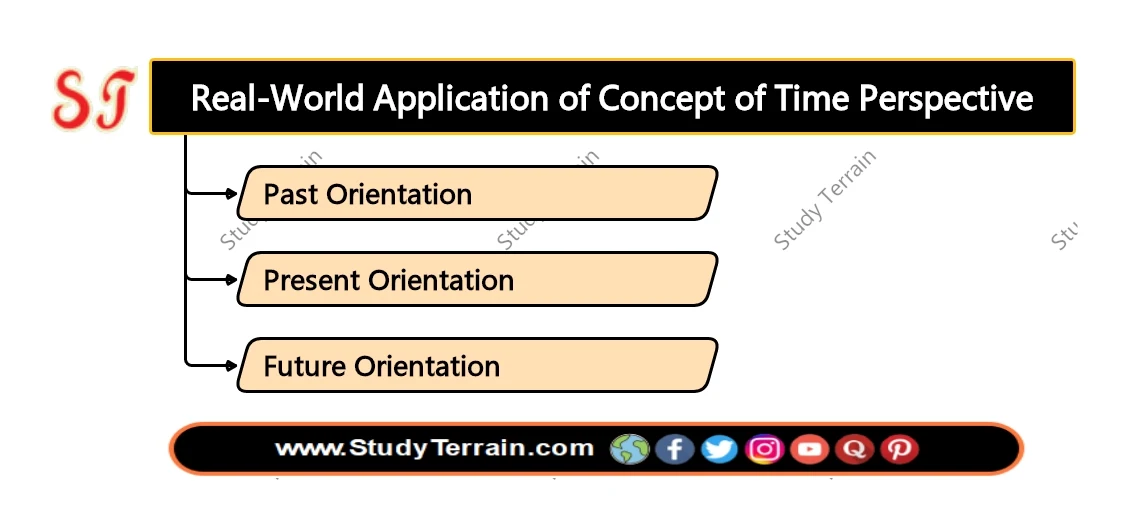In both personal and professional spheres, time plays a crucial role in decision-making. The concept of time perspective involves considering the temporal dimension when making choices, weighing the implications of decisions over time. In this article, we'll explore the concept of time perspective, its significance, and how it influences our decision-making processes.
Table of content (toc)
Understanding Time Perspective
Time perspective refers to how individuals perceive and evaluate the past, present, and future, and how this perception influences their behavior and decision-making. It involves considering the consequences of decisions not only in the present moment but also over time, taking into account short-term and long-term implications.
Components of Time Perspective
Time perspective consists of three main components:
 |
| Components of Time Perspective - Study Terrain |
Past Orientation
People with a past orientation tend to focus on past experiences, traditions, and lessons learned. They may be more cautious and conservative in their decision-making, relying on historical data and past outcomes to guide their choices.
Present Orientation
Those with a present orientation prioritize the here and now, focusing on immediate pleasures, rewards, and gratifications. They may seek instant gratification and prioritize short-term gains over long-term benefits.
Future Orientation
Individuals with a future orientation are forward-thinking and goal-oriented. They consider the long-term consequences of their actions, plan for the future, and make decisions based on achieving future objectives and outcomes.
Importance of Time Perspective
Understanding and balancing time perspective is crucial for several reasons:
 |
| Importance of Time Perspective - Study Terrain |
Effective Decision-Making
Considering the past, present, and future helps in making well-rounded decisions that account for immediate needs as well as long-term goals.
Risk Management
Future-oriented thinking allows for better risk assessment and mitigation, anticipating potential challenges and opportunities.
Goal Achievement
A future-oriented perspective facilitates goal setting and planning, leading to better progress and achievement of desired outcomes.
Adaptability
Balancing time perspectives enables individuals and organizations to adapt to changing circumstances and environments, ensuring resilience and sustainability.
Real-World Application of Concept of Time Perspective
Let's consider a real-world example to illustrate the application of time perspective:
 |
| Real-World Application of Concept of Time Perspective - Study Terrain |
Imagine a small business owner who is considering investing in upgrading their technology infrastructure. They must weigh the immediate costs against the long-term benefits:
Past Orientation
The business owner may review past experiences of technology upgrades, considering factors such as cost, return on investment, and potential pitfalls.
Present Orientation
They may focus on immediate financial constraints and the disruption that upgrading technology may cause to current operations.
Future Orientation
Looking ahead, the business owner may envision improved efficiency, productivity gains, and a competitive edge resulting from the technology upgrade.
Conclusion
The concept of time perspective reminds us that decisions made today have implications for the future. By considering the past, present, and future, individuals and organizations can make more balanced, informed decisions that align with their goals and values. Balancing time perspectives allows for effective risk management, goal achievement, and adaptability in an ever-changing world. Embracing the concept of time perspective isn't just about making decisions—it's about shaping a better future for ourselves and those around us.
For more content Managerial Economics



